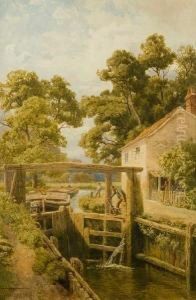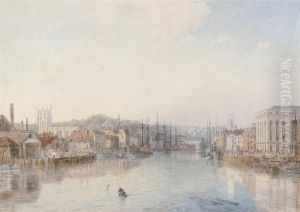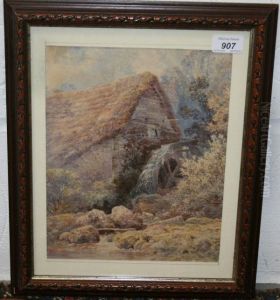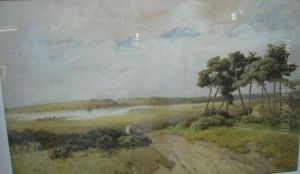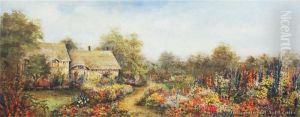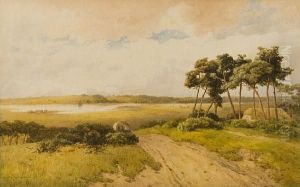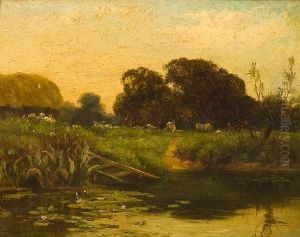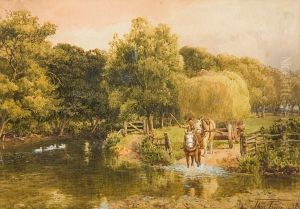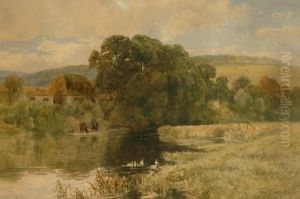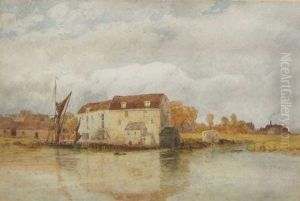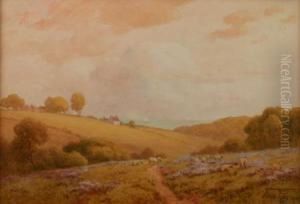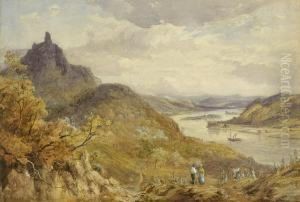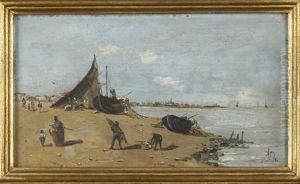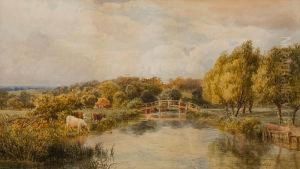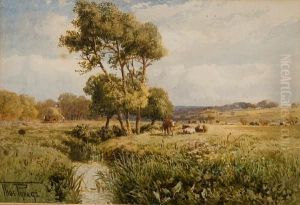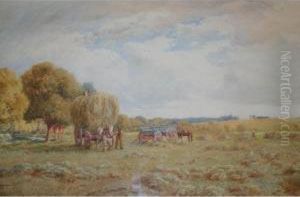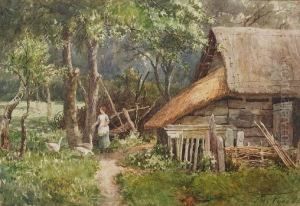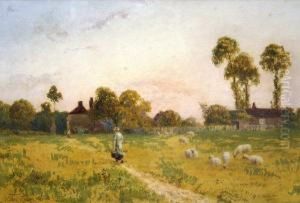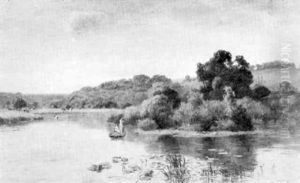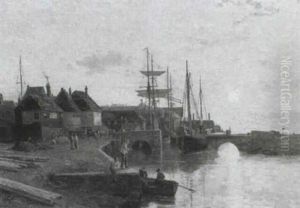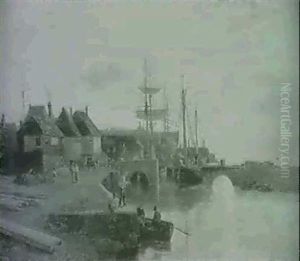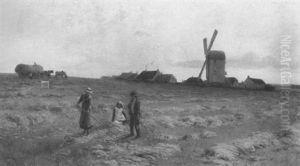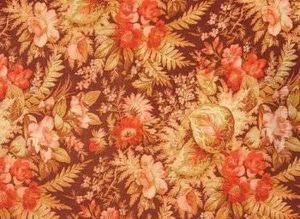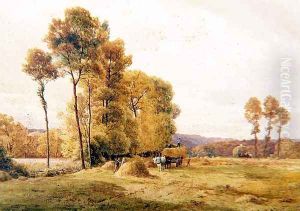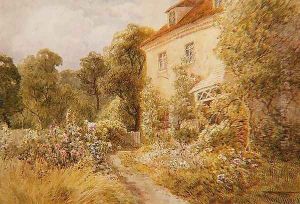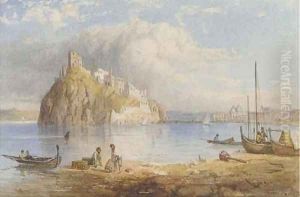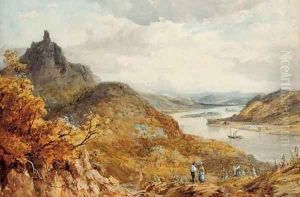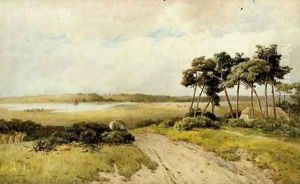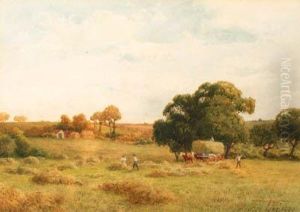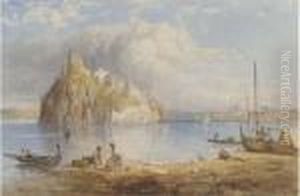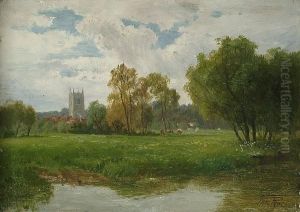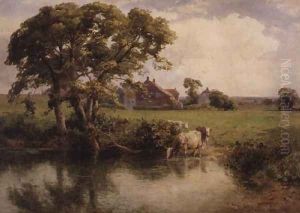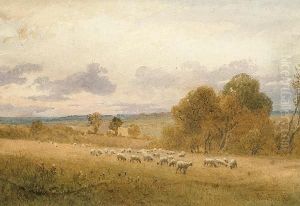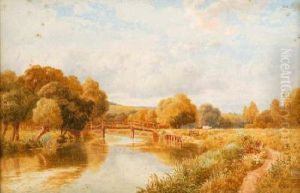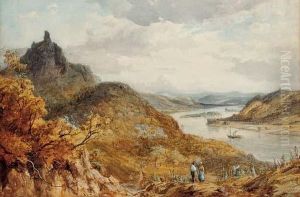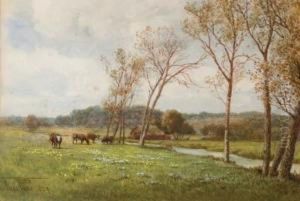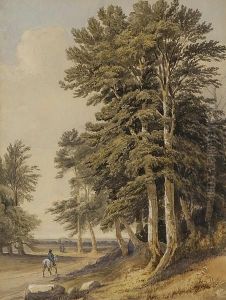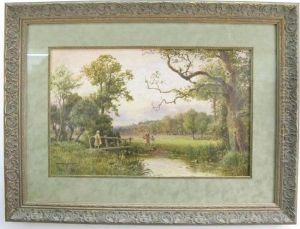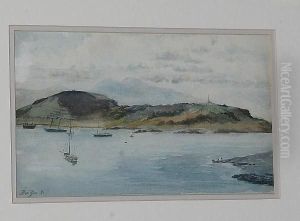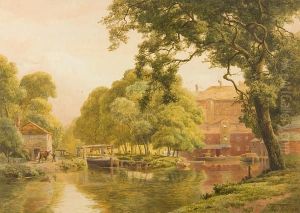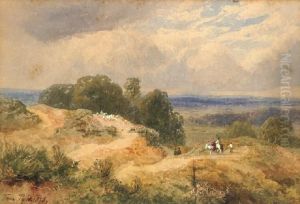Thomas Pyne Paintings
Thomas Pyne was an English landscape painter, known for his picturesque depictions of British countryside and rural scenes. Born in 1843 in the United Kingdom, Pyne belonged to an era when the British landscape tradition was undergoing significant changes, influenced by the Romantic movement and later by the Impressionists.
Pyne's style was rooted in the naturalistic representation of the environment, with a focus on capturing the changing effects of light and atmosphere, which he portrayed with a soft palette and a sensitive handling of color. His works often featured serene compositions, with a fine attention to detail and a strong sense of place, which resonated with the Victorian audience's nostalgia for the countryside during the Industrial Revolution.
Throughout his career, Pyne exhibited his works at various prestigious venues, including the Royal Academy and the Royal Society of British Artists. His paintings were well received, and he enjoyed the patronage of art collectors and enthusiasts of the period. Although not as widely known as some of his contemporaries, Pyne's contribution to the British landscape painting genre was significant, and his works are still appreciated by art historians and collectors for their quiet beauty and technical skill.
Thomas Pyne continued to paint throughout his life, and he passed away in 1935, leaving behind a legacy of idyllic landscapes that captured the essence of the English countryside. His work remains a testament to the enduring appeal of rural England and the landscape tradition that flourished during his lifetime.
